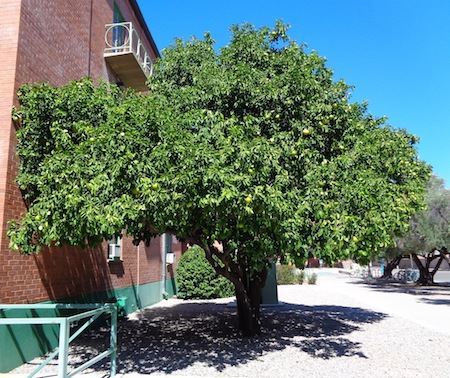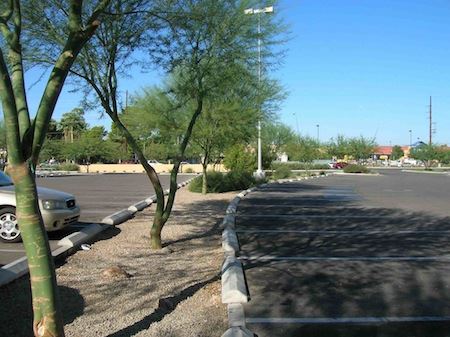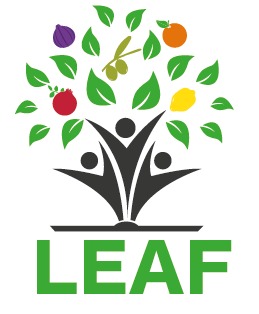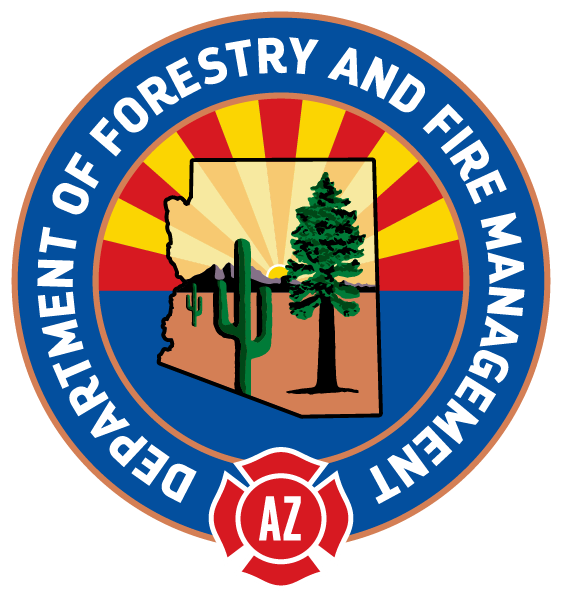Sun and Shade Patterns Click Here for PDF of Sun and Shade PatternsSun angles vary with latitude, time of year and time of day. Potential climate change in the U.S. Southwest will not change sun patterns, but could result in higher average temperatures and hotter, longer droughts. In Arizona summers, the sun shines from the northeast in the morning, reaches nearly straight overhead at midday and sets in the northwest at sunset. Direct sunlight can be very hot, with areas next to west-facing walls even hotter. Shade cast in summer can be a relief, but the air temperature is often still hot. In Arizona winters, the sun moves across the southern sky from sunrise to sunset each day. Shade on the north side of buildings and walls can be deeply cold in winter. South-facing walls, if heated by the sun, can be somewhat warmer than overall outside temperatures. In fall and spring, milder air temperatures can moderate direct sun and deep shade throughout the site. Native trees are generally heat and sun resistant. They can shade houses, reducing household cooling costs and lowering outdoor temperatures around them. But even native trees can suffer if pruning exposes formerly shaded bark and stems to full sun, so avoid heavy pruning in summer. Instead, prune in cooler seasons to expose bark and stems to direct sun gradually. Nonnative edible trees may need partial shade from the long hours of direct summer sun, especially in southern deserts. Place heat- and sun-sensitive trees east of buildings to provide them with shade during hot afternoons. Trellises, shade cloth and porches can help create partial shade, especially for trees on the west side of buildings. During hot summers, urban areas with extensive roofs, parking lots, streets and other pavement absorb heat all day and radiate heat back out at night, stressing trees and people. This is called the urban heat island effect. Potential future higher temperatures could increase this effect. Shaded pavement can be substantially cooler than sunny pavement. At the same time, trees provide evaporative cooling to the air around them, much as misting systems do. Where possible, plant heat-tolerant native edible trees to shade roofs, walls and pavement. If planting medium and high water-use edible trees in low-elevation desert urban areas, carefully select an appropriate microclimate and ensure they have sufficient water to survive long, hot summers. Use rainwater harvesting and urban stormwater runoff to help water the trees. In winter, the north sides of buildings are shaded all day. This cooler microclimate can supply the chill hours that some trees need to produce fruit. On the other hand, trees that are cold sensitive will benefit from being planted on the south side of buildings where the walls can absorb heat from daytime sun in winter and release it at night, buffering cold overnight temperatures. In those Arizona climates where winter warmth is welcome, planting trees that drop their leaves—rather than planting evergreen trees—on the south side of buildings will allow sun to enter south-facing windows. |
TOP PHOTO A citrus tree on the east side of a brick building benefits from morning heat and light all year, while being shaded from hot afternoon sun in summer. MIDDLE PHOTO Shade is cast on cars by native trees in a parking lot. BOTTOM PHOTO Deep shade is cast to the north in winter by native trees. The water harvesting basin receives runoff water from the adjacent parking lot. |
CAUTION: Never eat anything that is not properly identified. It is your responsibility to ensure that all fruits, nuts, seeds, pods and other edible products of trees and shrubs are correctly identified and safe to eat before eating them or serving them to others.
Copyright 2023
LEAF is under the fiduciary stewardship of the Arizona Community Tree Council, a 501(c)3 non-profit organization.
70 S Val Vista Drive, Suite A3-186, Gilbert, AZ 85296


.jpg)



